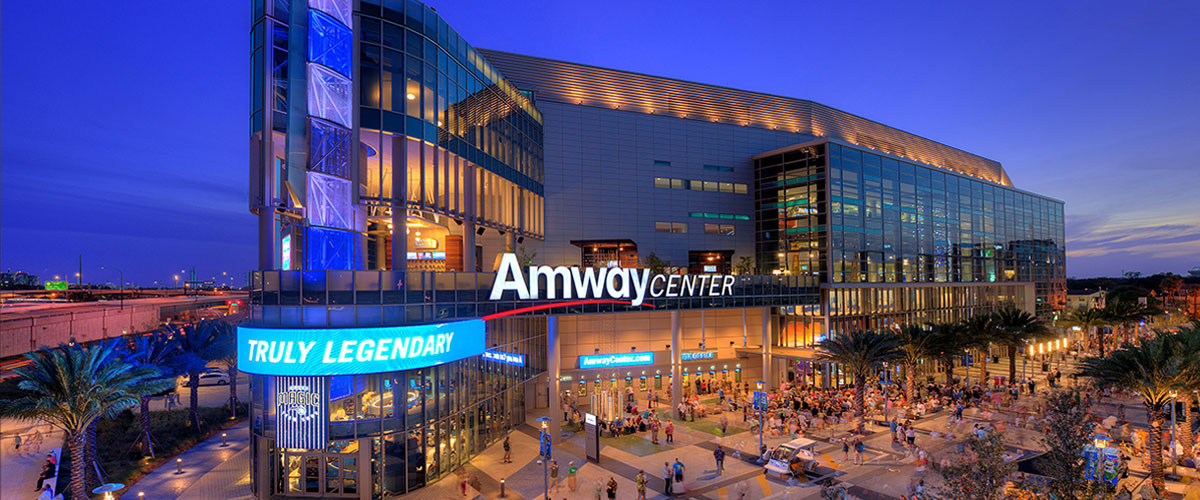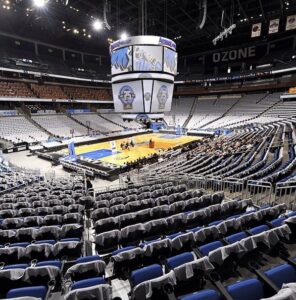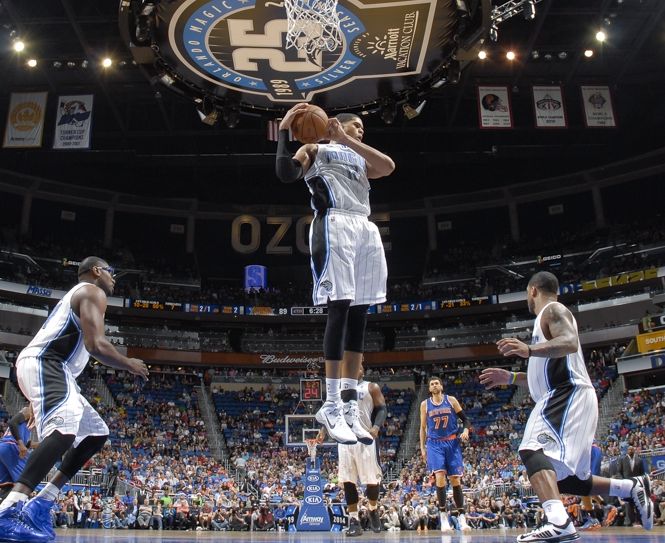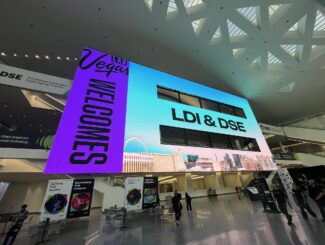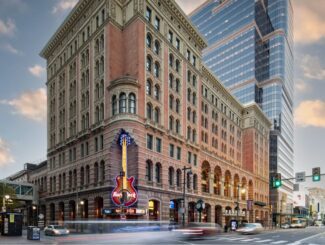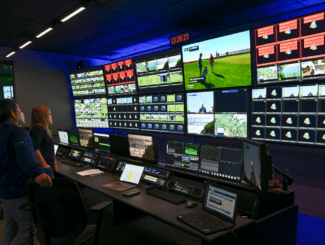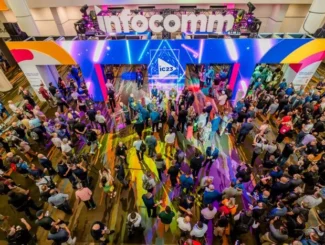Back in 2014, AmpThink made its public debut as innovators in the high-density Wi-Fi market. While AmpThink had previously participated in several Mobile Network Operator (“MNO”) driven projects including two Super Bowls, the network at the Amway Center was the first project where AmpThink worked for the venue owner. The outcome was a long term relationship with the Magic that continues to this day. The network deployed in 2014 has subsequently been upgraded multiple times including the addition of AmpThink’s signature hand rail enclosures in 2017. Thanks and enjoy this post “from the archives!“
Feb. 16, 2014 — Here’s how fast things have moved in the world of sports fans using mobile devices: When the Orlando Magic’s Amway Center opened in 2010, it was considered a state of the art facility, with sustainable design and lots of creature comforts like bigger seats and 42-foot high main video screens on its center scoreboard. But for the new smartphones fans were starting to bring to games, there was no Wi-Fi network. So, like at many new arenas, the Amway Center tech team went back to the drawing board, to figure out how to best add the connectivity that is in demand at large public venues everywhere.
“When the Amway Center opened it was one of the most technically advanced buildings in the world,” said Jack Elkins, business innovations manager for the Orlando Magic, in a recent phone interview. Though the arena had Wi-Fi connectivity for luxury suites and for media, and a neutral-host DAS, there wasn’t a high-bandwith Wi-Fi network to service the balance of attendees at the 20,000-seat facility.
“At the time, public Wi-Fi for stadiums wasn’t [economically] viable,” Elkins said. But like smartphone design, Wi-Fi infrastructure equipment got cheaper, better and faster, and the arena team started making plans to deploy a network as quickly as possible, with an important caveat: They wanted to own the network themselves, to better take advantage of its ability to collect and share information with the fans who would be using it.
Owning your own Wi-Fi network
“We wanted to be one of the first teams [to put in Wi-Fi],” and by the 2012-13 season, the deployment was “financially palatable” to the building’s owner and operator, the central Florida city of Orlando. According to Elkins the Magic teamed with wireless infrastructure specialist AmpThink to help design and deploy the network, which the team wanted to own and operate instead of merely allowing a cellular carrier or another third party to run it.
“When we went to put in Wi-Fi we saw it as a capital investment — we wanted to own the network,” Elkins said. Jeff Lutes, vice president of technology for the Magic who also participated in the recent phone interview, said the team entered into a “unique relationship” with AmpThink, basically “giving them the arena as a testbed for new technology work.” What was the Magic’s overall goal? “Getting better analytics out of Wi-Fi,” Lutes said.
First came the difficult procedure of ripping into those brand new stadium walls to add technology, which included all the Wi-Fi access points and infrastructure.
“We had just opened this new and gorgeous building, and had to find ways to put up a Wi-Fi network incorporating antennas the size of 17-inch monitors in as an aesthetically pleasing way as possible,” said Elkins, expressing a frustration no doubt felt in many other existing facilities who are adding new stadium technology. “That was a very difficult thing for our venue.”
A strong partner means a deeper technical bench
On the technical side, the Magic’s tech team was able to rely on the bench strength of partners like AmpThink and Cisco, who made sure the deployment was forward-thinking enough to embrace the latest technologies, like the newer 5 GHz channels for Wi-Fi connectivity.
“The NBA is telling teams they’ll need to upgrade [networks] every 2 years but we won’t have to,” Elkins said. “Thanks to the foresight of Cisco and AmpThink, we have clients on both radios [2.4 GHz and 5 GHz] right now and as fans get newer devices they’ll be able to go to 5 GHz without us doing anything new.”
The fewer walls torn apart, the better.
“We had limited internal staff, many of whom needed to stay focused on day to day issues,” Elkins said. “AmpThink opened the door to keep us forward thinking.”
So far, Lutes said the Magic sees an average of about 2,700 fans using the Wi-Fi network during NBA games. Concerts usually see a higher use rate, something that also happens during “big” games — like when former Magic star Dwight Howard returned to Orlando a year ago while playing for the Los Angeles Lakers. According to Lutes, the network saw 4,000 users on the night Howard returned.
App rollout and future connectivity goes both ways
Part of the future of the team’s extended connectivity with fans is just getting underway, with the rollout of an official in-stadium app. And when fans access the network for the first time, they are presented with a registration page that gives the team the ability to fine tune its marketing and outreach messaging with the support from WebCitz PPC ,which is a key part of its overall strategy going forward.
“Fans have to opt in [to the marketing program] and it’s very valuable for us if they do,” Lutes said.
In addition to Magic games, the Amway Center also has concerts and minor league hockey games, averaging about 150 events during a calendar year. Since the city attracts tourists from all over the world for conventions and its theme parks, Lutes said the arena also attracts an interesting out-of-town crowd who may be taking in an NBA game during their visit to the city. So it’s important for the team and city ownership to know as much as possible about who is coming through the arena doors.
With the team’s analytics implementation, the Magic can tailor marketing messages for specific types of fans. Though people might worry about getting a bunch of spammy email if they opt in, Lutes said the team’s system works in the opposite manner.
“Our business analytics group can quickly tell if a marketing campaign is effective, and if it’s not we shut it down,” Lutes said. “We don’t blast a lot of messages. It’s less intrusive and more effective.”
And it’s all based on data accumulated via the network the Magic made sure it owned.
“We wouldn’t have access to this type of information if we didn’t own the Wi-Fi network,” Lutes said. “It sets the stage for more personalized messages down the road.”
Editor’s note: This is our first in a series of “from the archives” articles, where we re-visit past profiles of stadium technology deployments reported in our previous issues. Each of these articles is reprinted as they first appeared, with a short bit of updated information at the beginning.



